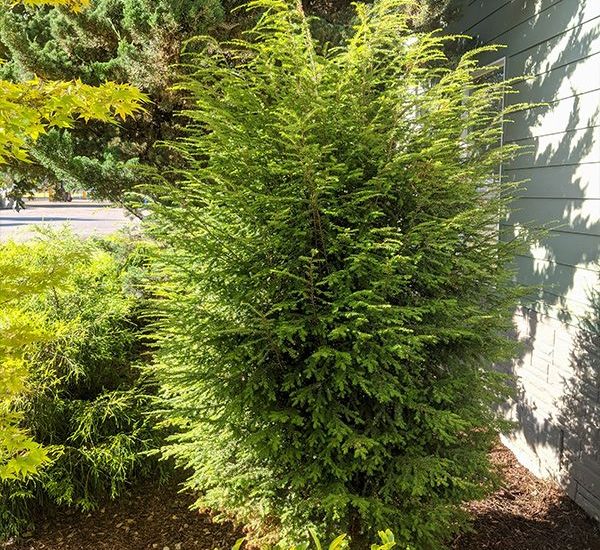Southern California Pine Trees: A Guide to the Region’s Conifers
Southern California is home to a diverse range of flora and fauna, including several species of pine trees. These coniferous evergreens are an important part of the region’s ecosystem, providing habitat for wildlife and contributing to the overall health of the environment.
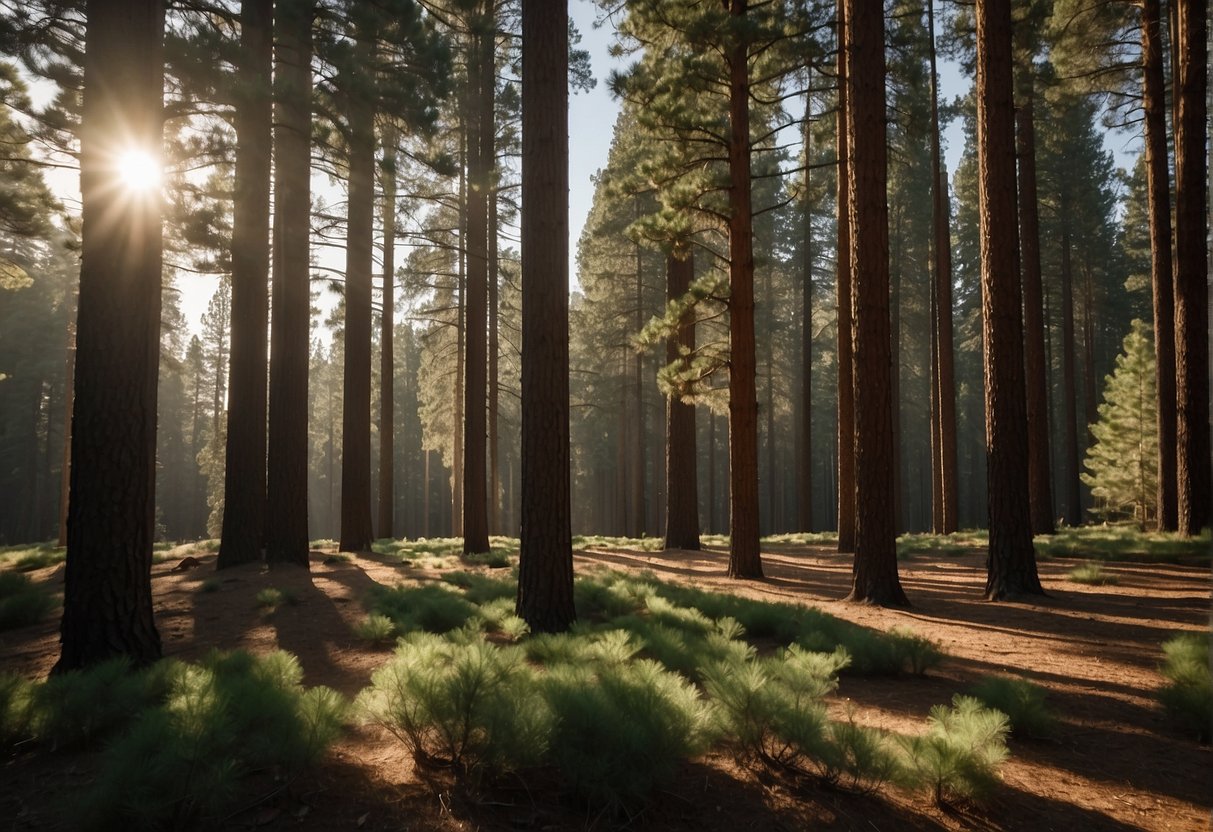
One of the most common types of pine trees found in Southern California is the Coulter pine (Pinus coulteri). This tree is known for its large, heavy cones that can weigh up to 10 pounds each. Coulter pines can be found in the foothills and mountains throughout the region, and are an important food source for several species of wildlife, including squirrels and birds.
Another species of pine tree found in Southern California is the Jeffrey pine (Pinus jeffreyi). This tree is known for its distinctive vanilla scent, which is created by the tree’s resin. Jeffrey pines can be found in the higher elevations of the region, and are often used for timber and other commercial purposes. Despite their importance, both Coulter and Jeffrey pines face threats from climate change, wildfires, and other environmental factors.
Species and Distribution
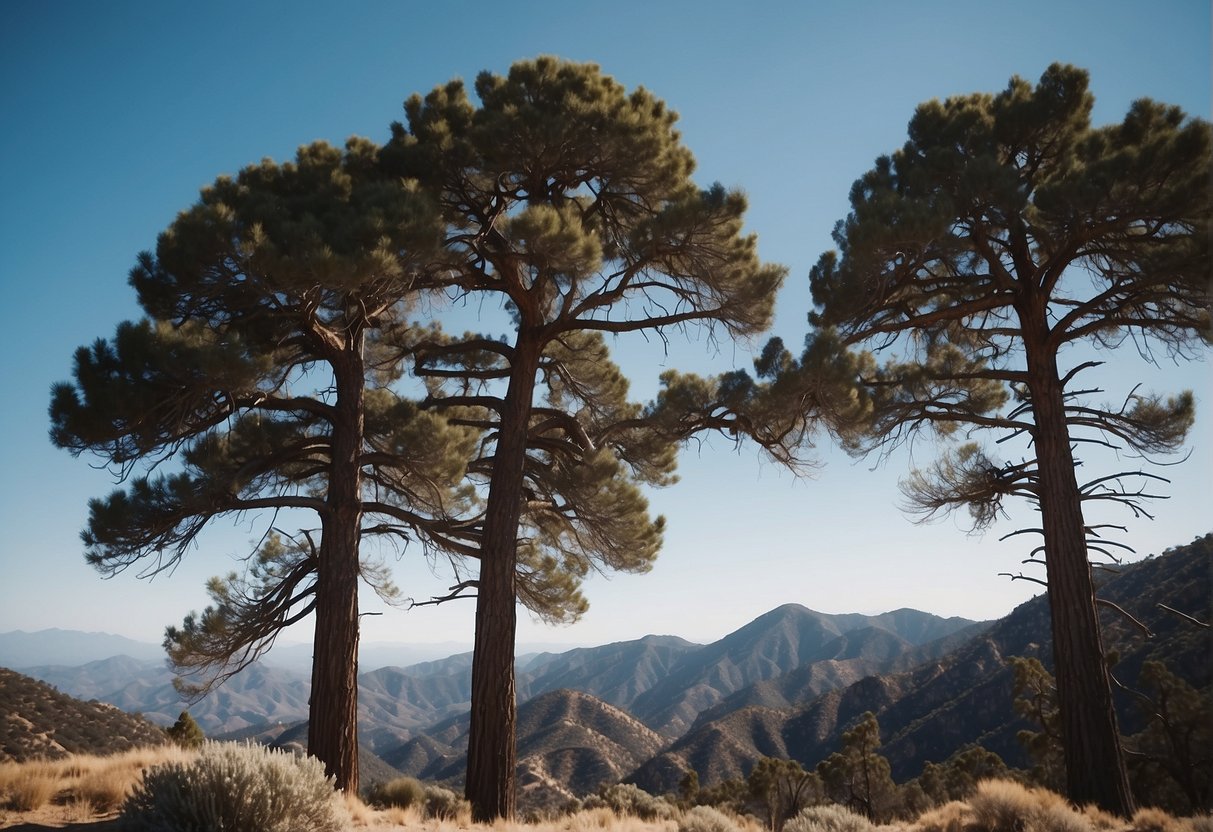
Major Pine Species in Southern California
Southern California is home to a variety of pine species, each with its unique characteristics and distribution. The major species found in the region include Bishop Pine, Jeffrey Pine, Torrey Pine, Ponderosa Pine, Sugar Pine, and Coulter Pine.
The Bishop Pine is mostly found in the coastal areas of southern California, particularly in the Santa Lucia Mountains. The Jeffrey Pine, on the other hand, is more common in the San Bernardino and San Jacinto Mountains. The Torrey Pine, which is the rarest pine species in the United States, is only found in the Torrey Pines State Natural Reserve in San Diego County.
The Ponderosa Pine is mostly found in the eastern part of the region, particularly in the Sierra Nevada and Klamath Mountains. The Sugar Pine is also found in the Sierra Nevada, and it is the largest pine species in the world. The Coulter Pine is mostly found in the southern part of the region, particularly in the San Gabriel and San Bernardino Mountains.
Geographical Spread and Habitat
The geographical spread of the various pine species in southern California is largely influenced by factors such as climate, altitude, and soil type. For instance, the Bishop Pine thrives in areas with a cool, moist climate, while the Jeffrey Pine is adapted to hot, dry conditions.
Most pine species in southern California are found in mountainous areas, where they grow in mixed conifer forests alongside other tree species such as firs and spruces. The Sierra Nevada and Klamath Mountains are particularly rich in pine species, with the Ponderosa Pine being the dominant species in these areas.
In conclusion, the various pine species in southern California have adapted to different ecological niches, making them well-suited to the region’s diverse habitats. Understanding the distribution and habitat of these species is crucial in managing and conserving these important tree species for future generations.
Morphology and Identification
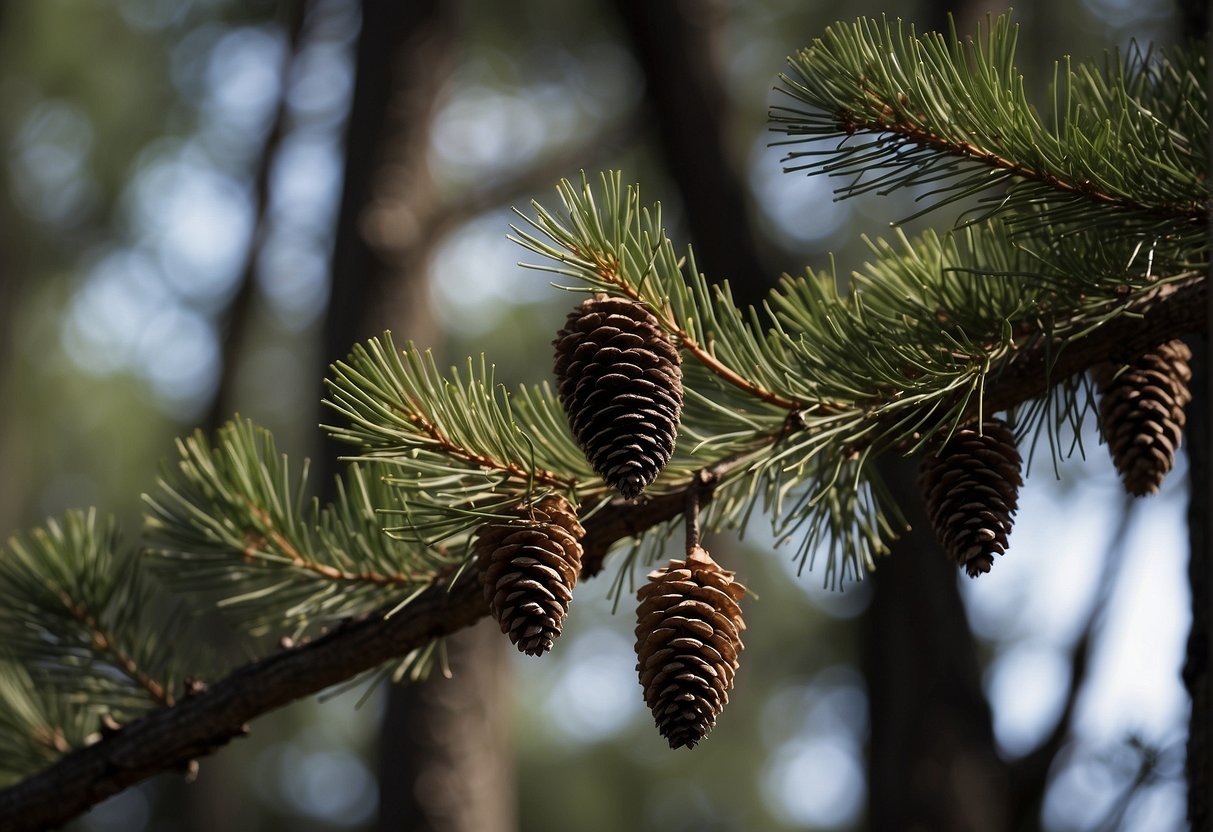
Identifying Features of Pine Trees
Southern California is home to a variety of pine trees, each with unique identifying features. One of the most prominent features of pine trees is their bark. The bark of mature pine trees is typically reddish-brown in color and has a scaly texture. The bark of young pine trees, on the other hand, is smooth and gray.
Another identifying feature of pine trees is their needles. Pine needles are typically long, thin, and pointed, and they grow in bundles of two, three, or five. The number of needles in each bundle is a key characteristic for identifying different species of pine trees.
Cones and Needles
Pine cones are another important feature for identifying pine trees. Pine cones come in a variety of shapes and sizes, but they are typically egg-shaped and have scales that close tightly over the seeds. The cones of some species of pine trees are so tightly closed that they require heat or fire to open and release their seeds.
The needles of pine trees are also important for identification purposes. Some species of pine trees have needles that are shorter and more curved, while others have longer and straighter needles. The color of the needles can also vary between species, ranging from bright green to blue-green.
In conclusion, identifying pine trees in Southern California requires a keen eye for detail and an understanding of the unique characteristics of different species. By paying attention to the bark, needles, and cones of pine trees, one can become an expert in identifying these majestic trees.
Growth and Ecological Aspects
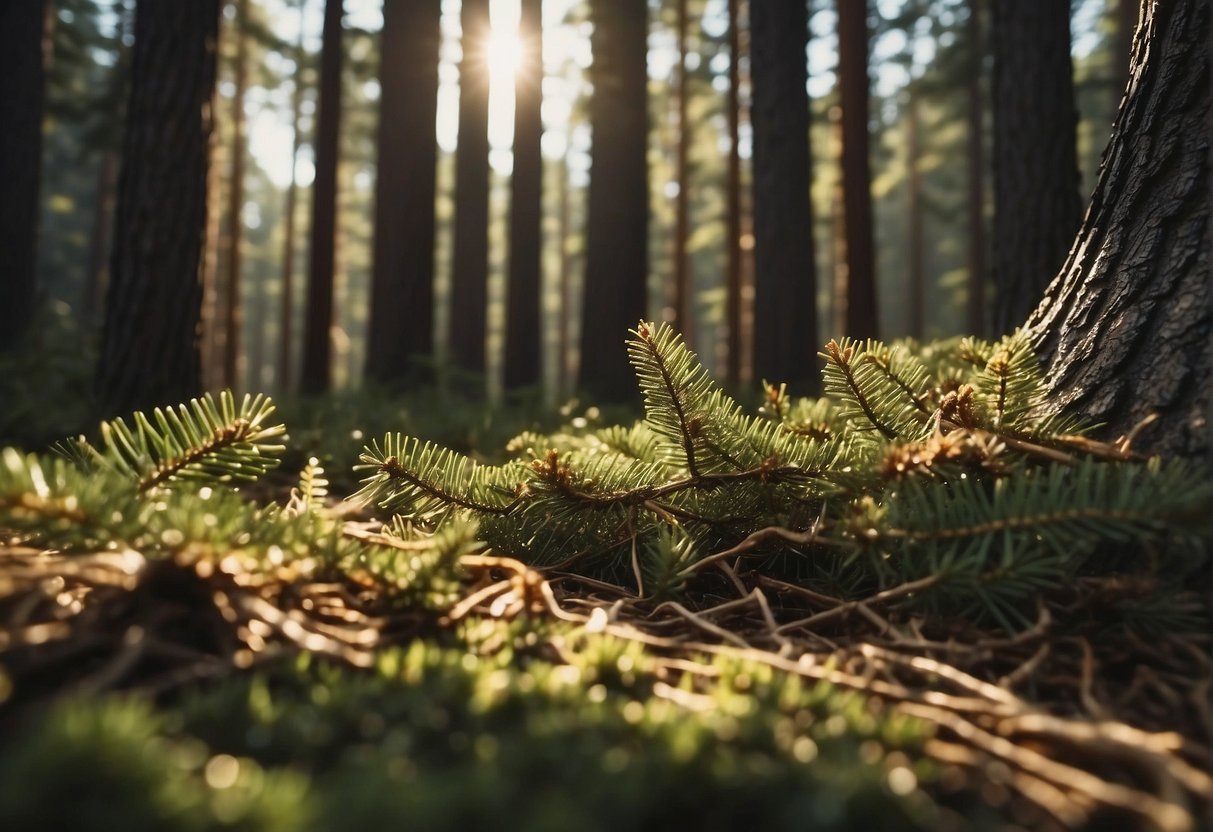
Southern California pine trees are known for their ability to thrive in a variety of climates and soil conditions. These trees are typically found in dry, arid regions but are also able to grow in cooler, foggy areas.
Climate Adaptability and Soil Preferences
One of the most impressive aspects of southern California pine trees is their ability to adapt to different climates and soil types. These trees are able to grow in both sandy and clay soils and can tolerate both dry and moist conditions. They are also able to grow in areas with high levels of salt in the soil.
Southern California pine trees are able to thrive in full sun, but they also have the ability to grow in areas with partial shade. They are able to tolerate cooler temperatures and foggy mornings, making them well-suited for coastal regions.
Water Requirements and Drought Tolerance
While southern California pine trees are able to grow in a variety of soil and climate conditions, they do have specific water requirements. These trees require moderate amounts of water and are able to tolerate short periods of drought.
However, during prolonged periods of drought, southern California pine trees may experience stress and may be more susceptible to disease and pests. It is important to provide these trees with adequate water during times of drought to ensure their continued health.
Overall, southern California pine trees are an excellent choice for those looking to add greenery to their landscape. These trees are able to adapt to a variety of soil and climate conditions and require moderate amounts of water. Their ability to tolerate drought and cooler temperatures makes them well-suited for coastal regions.
Conservation and Utilization

Pine Trees in Urban and Suburban Landscaping
Southern California pine trees are an excellent choice for landscaping in urban and suburban areas. They are drought-tolerant and require minimal maintenance, making them ideal for homeowners and business owners who want to conserve water and reduce their landscaping costs.
Pine trees also provide a habitat for wildlife and help to improve air quality by absorbing pollutants. They can be used as a windbreak to protect buildings and other structures from strong winds, and they can help to reduce erosion on steep slopes.
Commercial Uses and Environmental Significance
Southern California pine trees have a rich history of commercial use. The wood and timber from these trees have been used for a variety of purposes, including construction, furniture, and paper production. Pine trees are also an important source of resin, which is used in the production of adhesives, varnishes, and other products.
From an environmental perspective, pine trees are significant because they help to reduce the effects of climate change. They absorb carbon dioxide from the atmosphere, which helps to mitigate the effects of greenhouse gas emissions. Pine trees also help to maintain the health of the soil and prevent erosion, which is critical for maintaining the health of our ecosystems.
In summary, southern California pine trees are an important resource for homeowners, business owners, and the environment. They provide a variety of benefits, including drought tolerance, wildlife habitat, commercial uses, and environmental significance. By utilizing and conserving these trees, we can help to ensure a sustainable future for ourselves and future generations.

